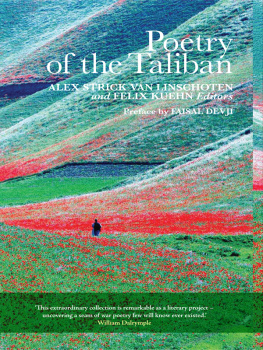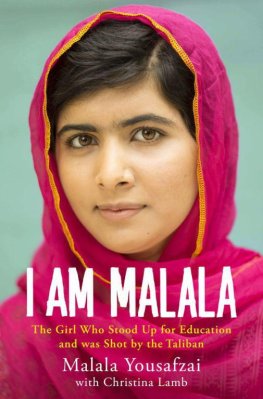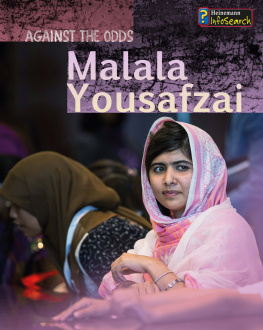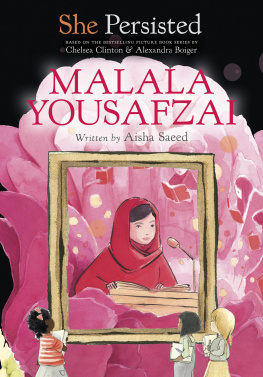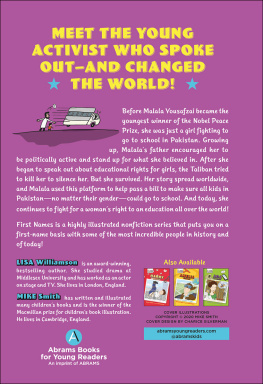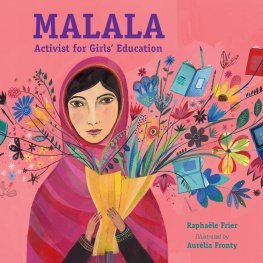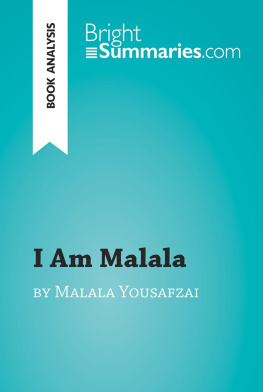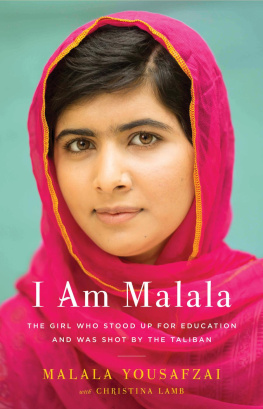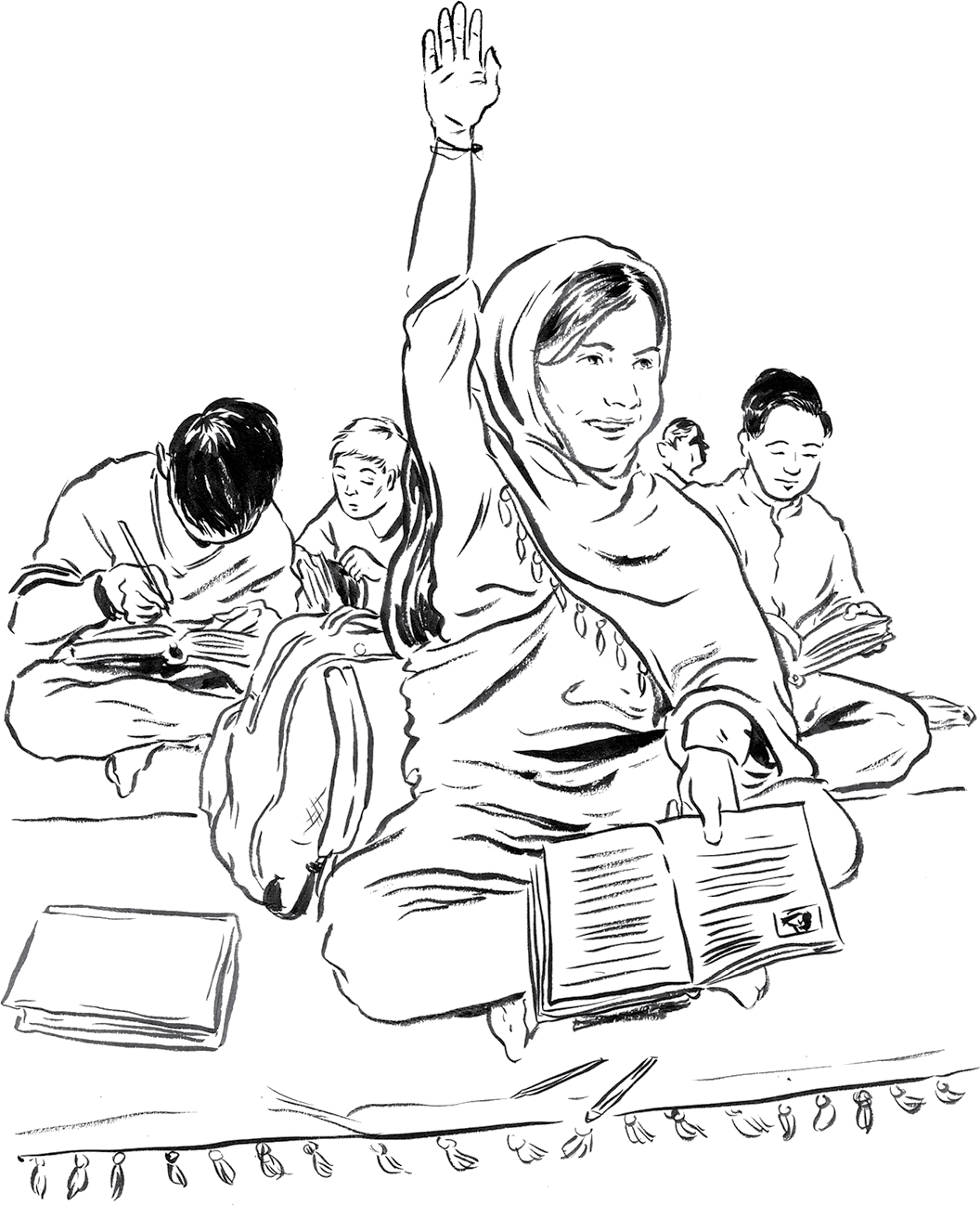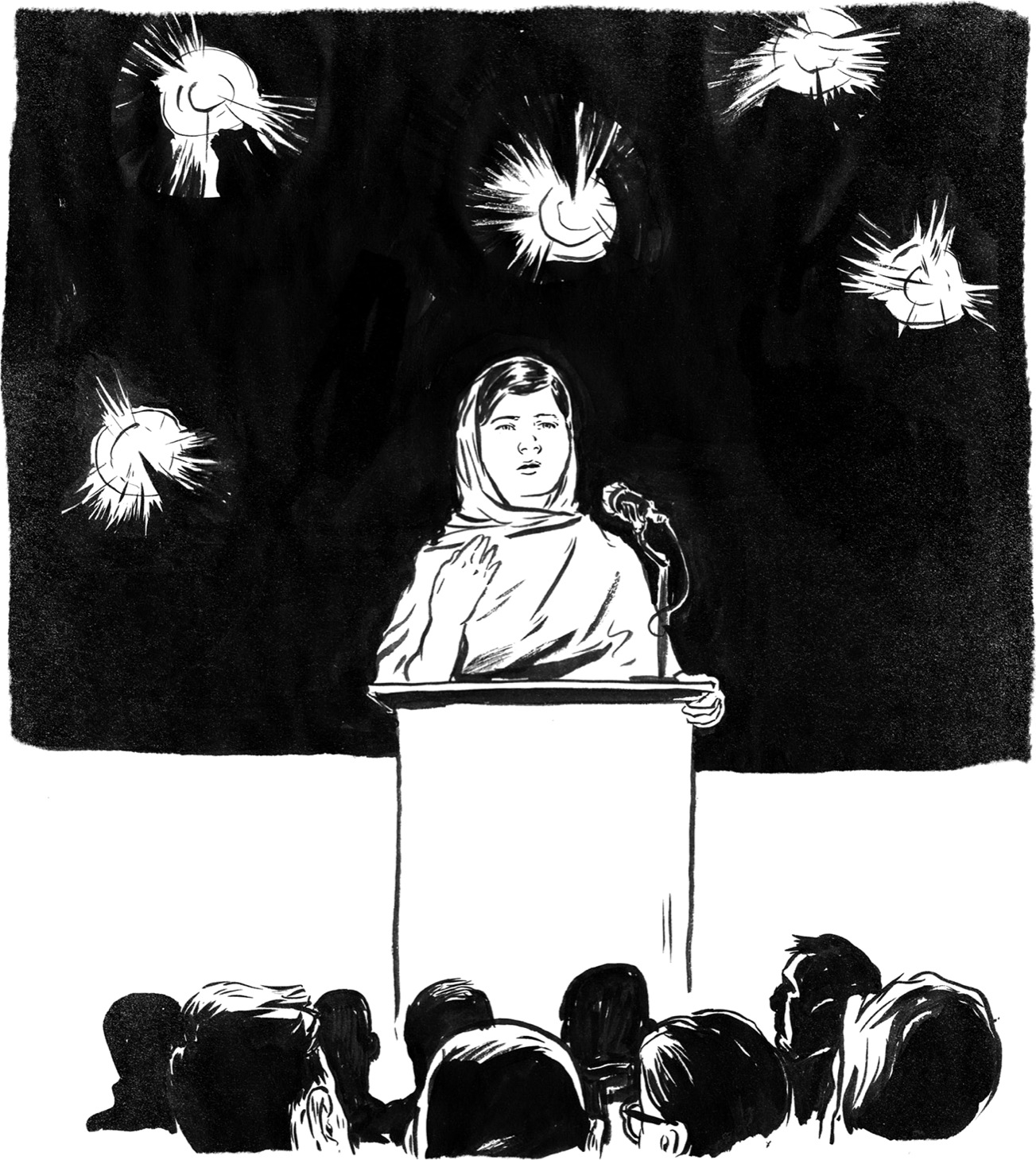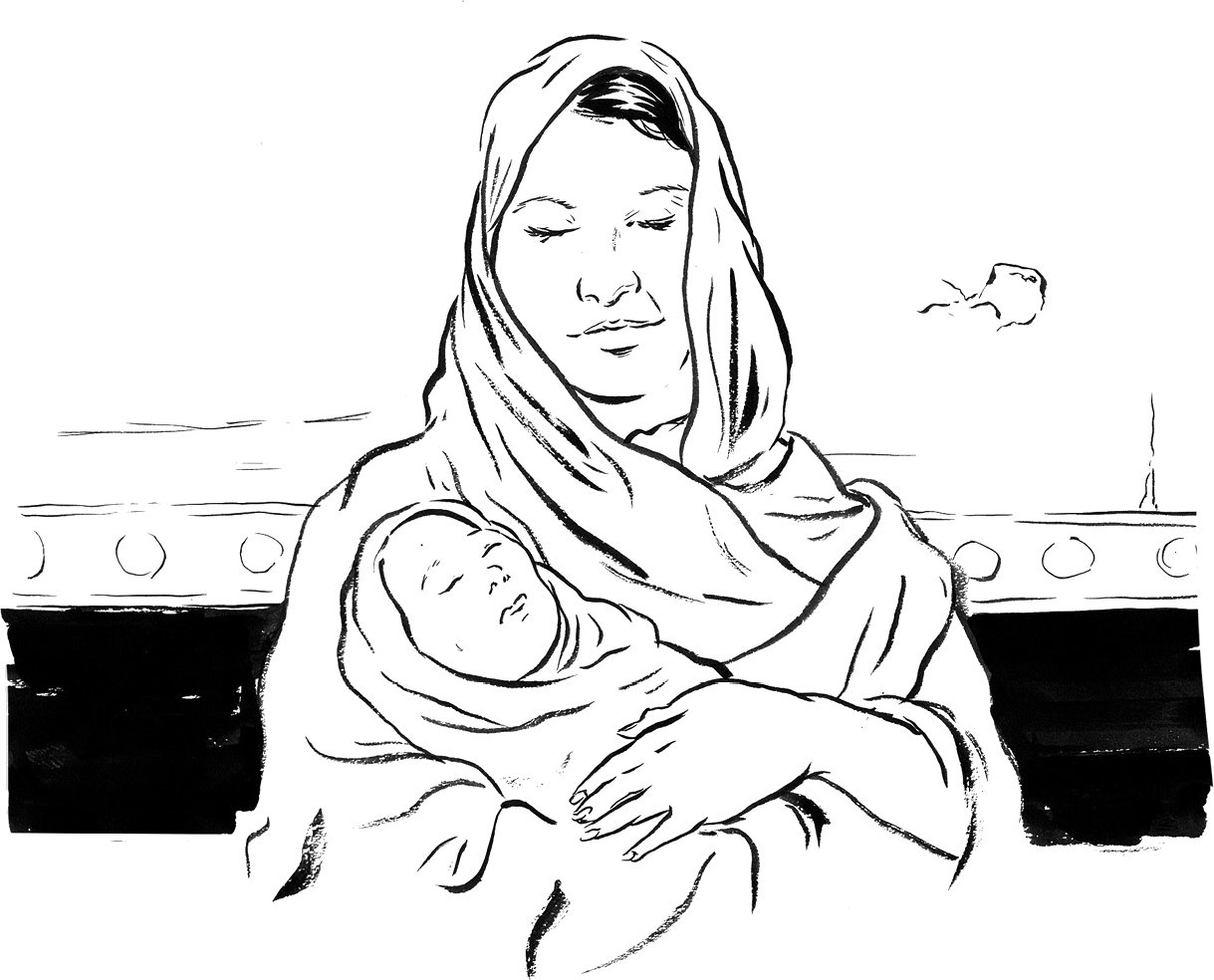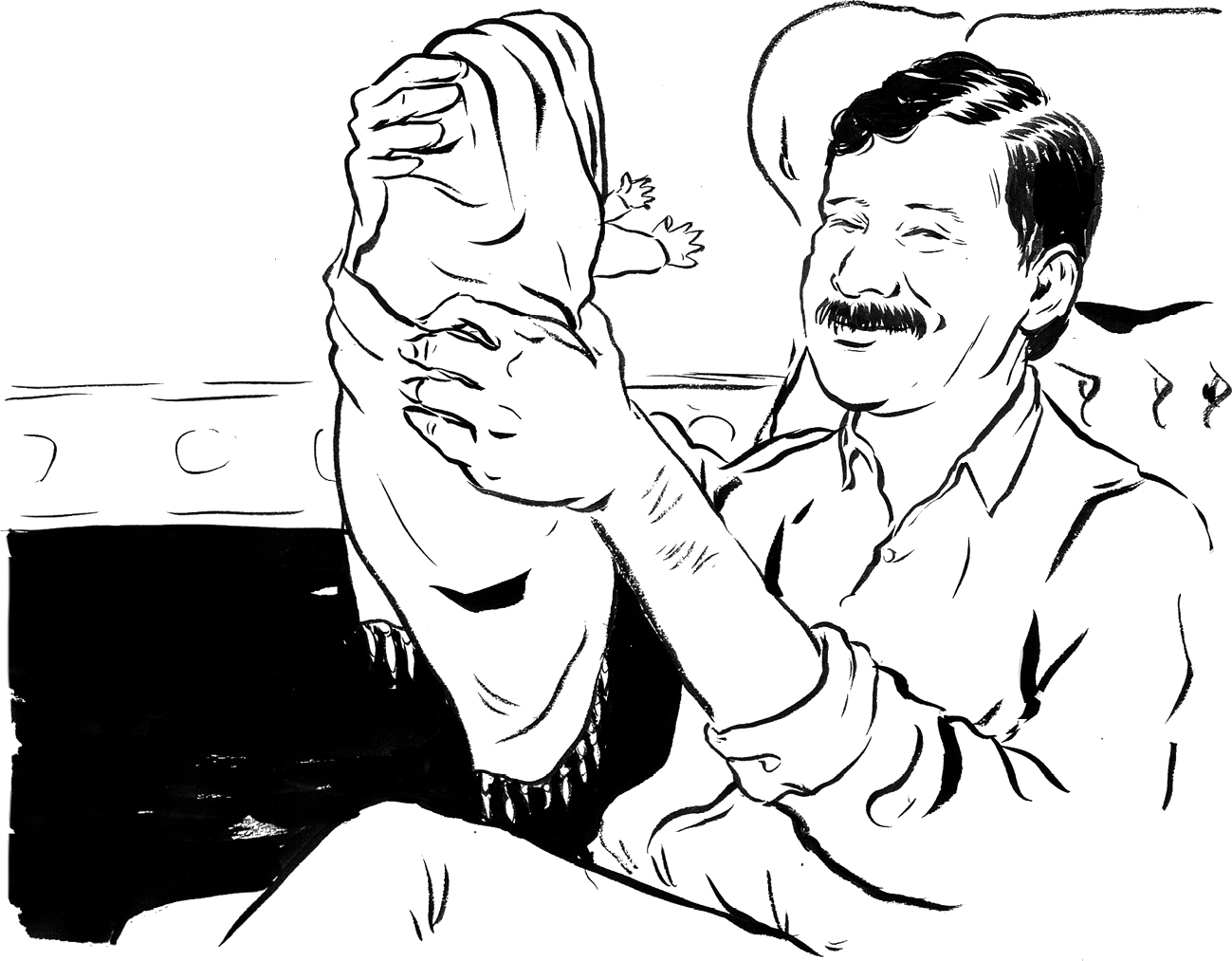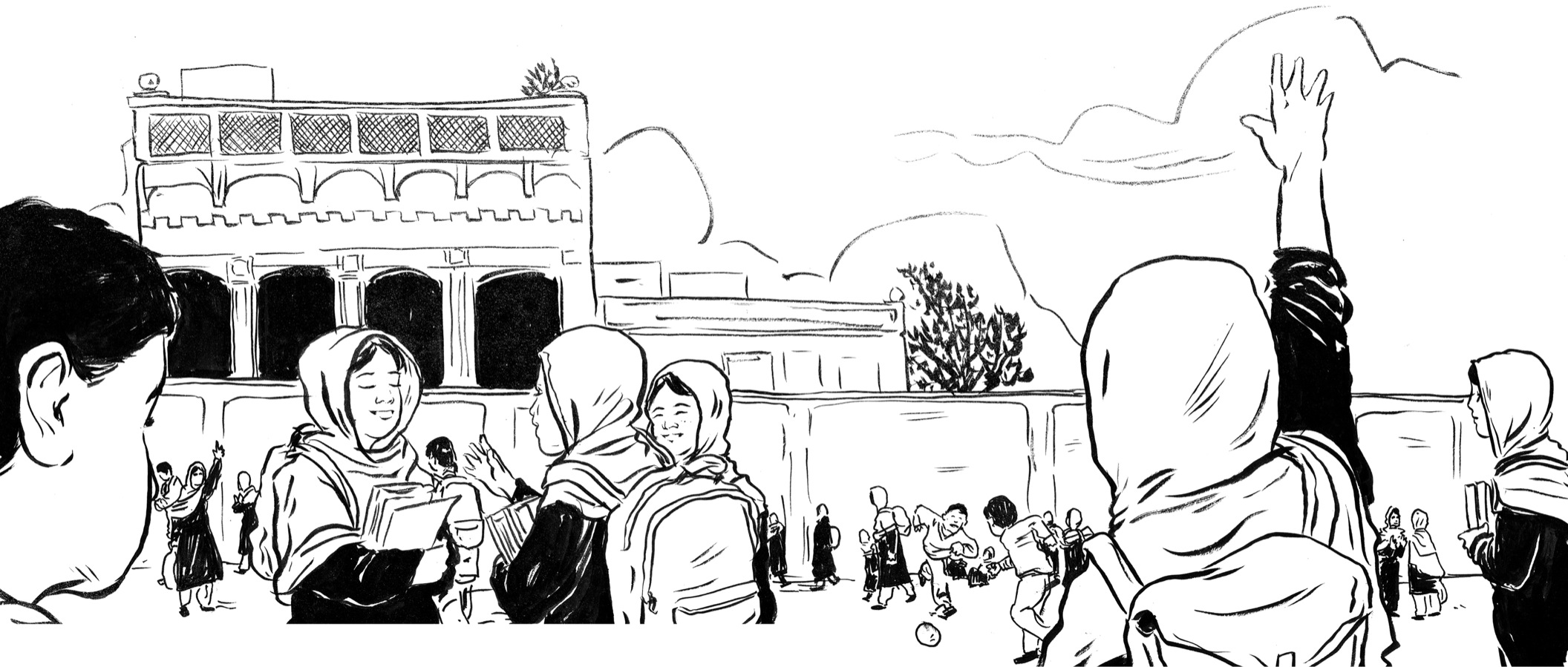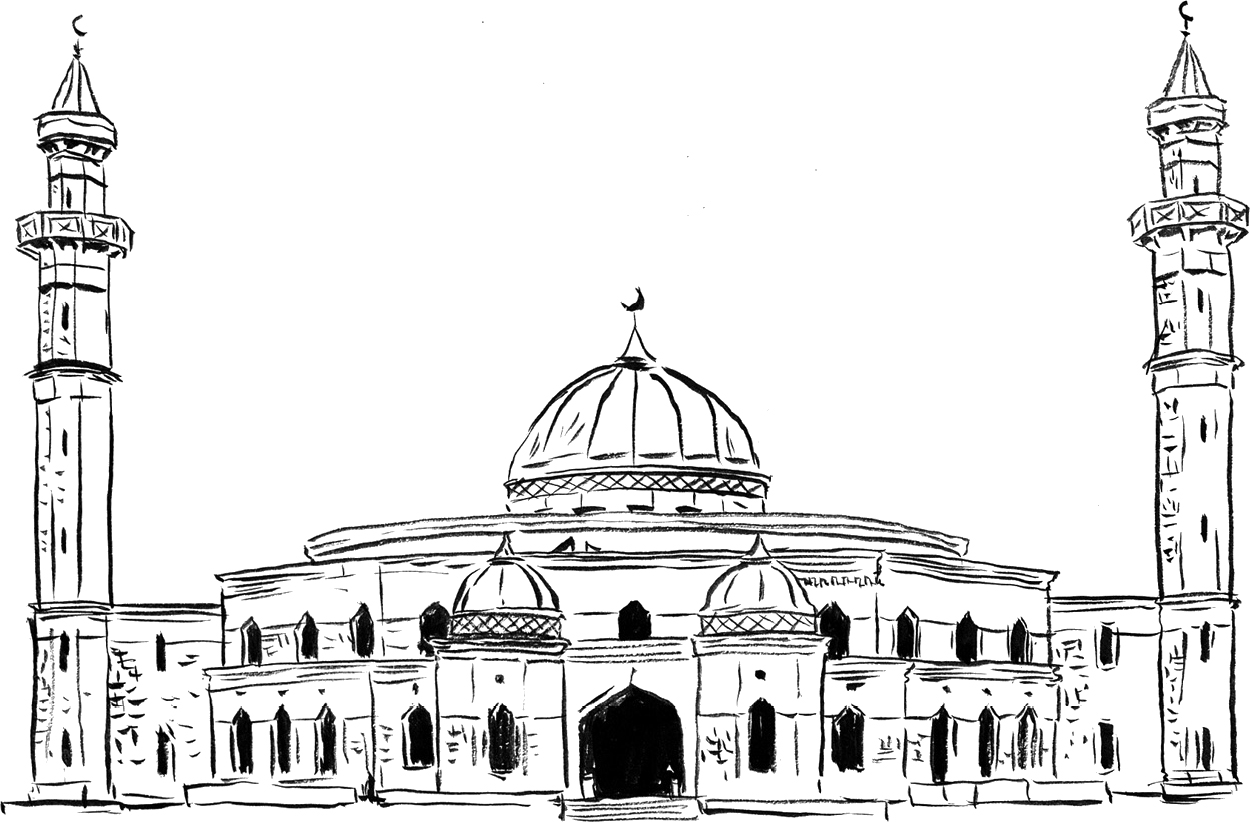Penguin supports copyright. Copyright fuels creativity, encourages diverse voices, promotes free speech, and creates a vibrant culture. Thank you for buying an authorized edition of this book and for complying with copyright laws by not reproducing, scanning, or distributing any part of it in any form without permission. You are supporting writers and allowing Penguin to continue to publish books for every reader.
The publisher does not have any control over and does not assume any responsibility for author or third-party websites or their content.
Text copyright 2015 by Dinah Brown. Illustrations copyright 2015 by Penguin Random House LLC. All rights reserved. Published by Grosset & Dunlap, an imprint of Penguin Random House LLC, 345 Hudson Street, New York, New York 10014. GROSSET & DUNLAP is a trademark of Penguin Random House LLC.
Who Is
Malala Yousafzai?
When Malala Yousafzai (mah-LAH-lah yoo-sahf
-ZIGH) was a little girl in Mingora, Pakistan, she decided to be a doctor when she grew up. She knew she would have to go to school for many years and study very hard. But Malala didnt mind at all. She loved everything about school. She loved reading. She loved history and geography and science. She loved studying religion. She enjoyed writing and reading stories aloud to her classmates. When her teacher talked about something new, she couldnt wait to learn more. Tests were difficult, but they were fun, too, especially when she had studied hard and knew the answers.
Then, when Malala was ten years old, her life changed. War came to Mingora, the city where she lived. A group of violent fighters called the Taliban had taken over her beloved Swat Valley. They were saying that girls would soon be stopped from going to school. Not boys. Just girls.
The Taliban started destroying girls schools. The Pakistan Army arrived to stop them. Mingora became a war zone. It was very dangerous. People were afraid to go out.
Malala wondered how she could ever become a doctor if she wasnt allowed to learn. She wished there was something she could do to help keep her school open. Many were closed, and few students dared to go to the ones that were open. But Malala went to school every day.
Malala spoke out. She told local newspapers that she was afraid the Taliban would close her school. She talked about how frightening her life had become. She said that more than anything, she wanted to go to school.
Malala was becoming famous. People were talking about her. Some Taliban fighters learned her name and decided to take revenge. On October 9, 2012, two of them stopped her school bus. One walked around to the back and looked inside. Then he shot Malala.
Malala Yousafzai was lucky to survive. She was flown to a hospital where she recovered.
Did she stop speaking out?
No.
When she was better, she went on working for the right of all children to be educated. But she never stopped learning and studying and going to school.
On July 12, 2013, she addressed hundreds of young people at the United Nations Youth Assembly in New York City. So here I stand, one girl among many, she said. I speaknot for myself, but for all girls and boys. I raise up my voicenot so that I can shout, but so that those without a voice can be heard.
Malala Yousafzai wanted one thingan education. She spoke up, and people listened. Things began to change, little by little, until the whole world was listening.
Chapter 1
A Girl Is Born
On July 12, 1997, Malala Yousafzai was born in the city of Mingora, Pakistan. Outside her parents bedroom, a new day was about to begin. Soon the city would come alive with horns honking and people calling and music playing. But now it was early. The morning sun was rising behind the mountains outside the city. A rooster crowed. A scooters engine revved.
Like many families in their poor neighborhood, the Yousafzais couldnt afford a doctor or midwife. Instead, a neighbor woman arrived to deliver the baby. When Tor Pekai Yousafzai was handed her first child, she felt instant love. But there was also sadness in her heart. Tor Pekai knew what was in store for this little girl. Her friends and neighbors in Mingora would not celebrate her birth. If she had been a boy, they would have brought gifts and food and poems.
Tor Pekai had grown up in a remote mountain village. Most girls did not go to school. However, Tor Pekai wanted to learn. When she was six, she went to the village school, but being a girl in school was so unusual that she soon left.
In Mingora and many other areas of the Swat Valley, it was common for all children to attend school. The first girls school was built in the 1920s. High schools and colleges followed. The rulers believed that all children, girls as well as boys, should be educated. Pakistan was proud of the graduates in the Swat area who went on to become teachers, doctors, and other professionals.
Malalas father had also grown up in a mountain village. He also believed in schooling for girls. When Ziauddin (zee-OW-dun) saw his new baby daughter, he did not feel disappointed. He felt proud. He would make sure that she would have the same chances in life as any boy.
Three years earlier, he had built a private elementary school for boys and girls. He called it the Khushal School. He was the teacher. Ziauddin planned to build more schools, then more and more. A high school for girls, another for boys, until every child in Mingora had a place to learn.
Ziauddin had grown up in a religious Muslim family. His father was a teacher. He taught Ziauddin that children were sacred, and all children needed to learn. He explained that it was important to help others. Ziauddin listened.
ISLAM
ISLAM IS A PEACEFUL RELIGION PRACTICED BY MORE THAN A BILLION PEOPLE AROUND THE WORLD. MUSLIMS ARE FOLLOWERS OF THE ISLAMIC FAITH. ISLAM TEACHES THERE IS ONE GOD, KNOWN AS ALLAH IN THE ARABIC LANGUAGE. THE WORDS OF ALLAH ARE REVEALED IN THE SACRED BOOK OF ISLAM, CALLED THE QURAN. MUSLIM HOUSES OF WORSHIP ARE CALLED MOSQUES.


